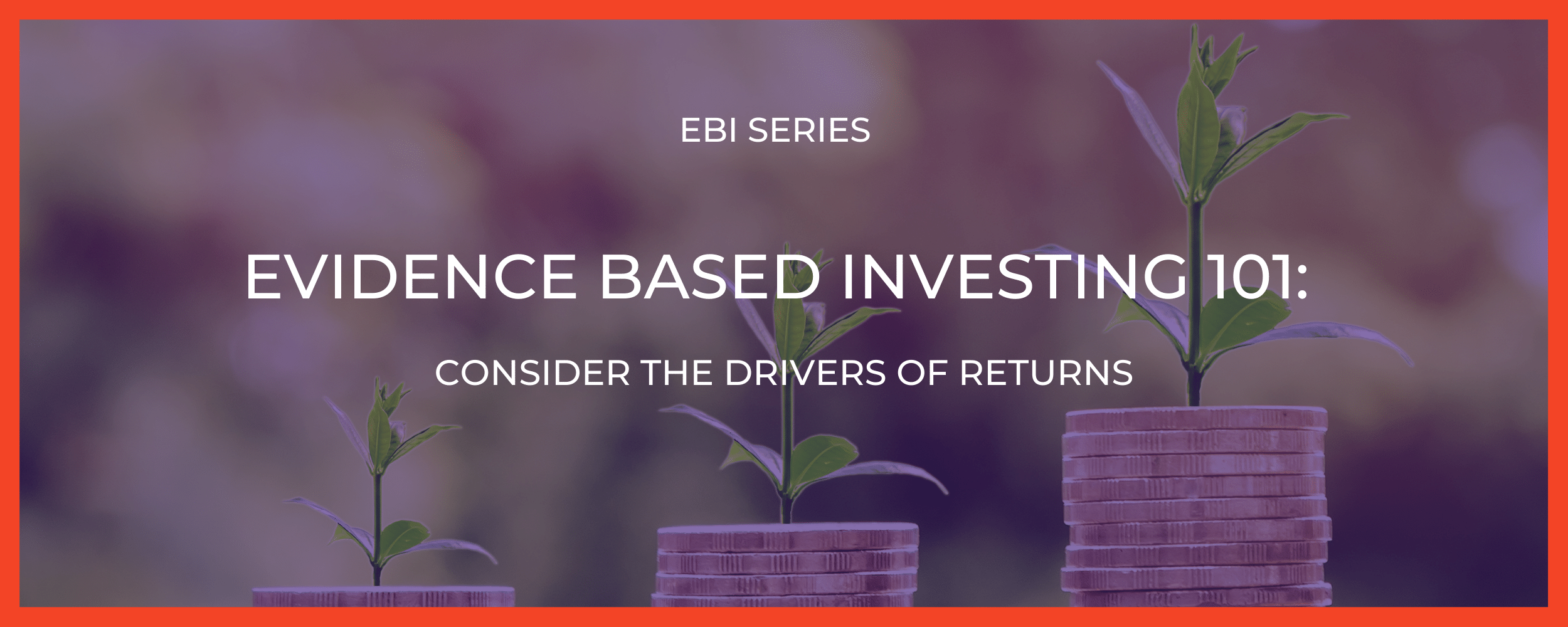EBI Series: Consider The Drivers of Returns
EBI Series: Consider The Drivers of Returns
Through many years of academic research, it has been found that there are a number of factors that indicate the differences in expected returns. Investors have the scope to achieve higher returns than they might expect if they base their portfolio around these factors. This concept is known as factor investing.
FACTOR INVESTING
It is not until recently that we have changed how we look at investments. Historically speaking, we have viewed investments in terms of asset classes, such as bonds and equities. However, factor investing looks beyond the asset classes in order to determine the factors that underpin risk and return. Some factors relate to certain asset classes whilst other asset classes might demonstrate a number of different factors.
ALPHA & BETA INVESTING
The recent rise in popularity of smart beta investing is related to factor investing in that smart beta is the delivery vehicle that captures these return drivers through transparent and rule-based methodologies. The aim of smart beta is to bring together the benefits associated with index and active investing strategies.
The aim of smart beta is to achieve alpha, lower risk or increase diversification at a cost that is lower than traditional active management but slightly higher than straight index investing.
Alpha and beta are regular technical risk calculations that investment managers will rely on in order to calculate investment returns and compare them. Essentially, alpha is the excess return and it is also an investment or portfolio of investments that are above and beyond a market index.
Beta is related to volatility and how it is measured or the systematic risk of security or portfolio, when compared to the whole of the market.
BENEFITS OF FACTOR INVESTING
The aim of factor investing is to improve diversification, create returns that are above market and actively manage risk. Portfolio diversification has long been used to invest safely while reducing risk. However, any gains that are made through diversification are lost should the different securities move at the same time with the wider market. For example, an investor may choose a mixture of stocks and bonds that all decline in value when certain market conditions arise.
What factor investing offers is a more stable form of diversification than asset class allocation on its own. It also increases the exposure to the drivers of return and that creates relationships that are stable with each other than asset classes and this helps to provide a more consistent level of diversification. The benefit is that factor investing makes it possible to offset any risks by targeting wider, persistent and recognisable drivers of returns.
FACTORS THAT DRIVE INVESTMENT RETURNS
Rather than viewing the market universe in terms of individual stocks and bonds, investors should define the market along the dimensions of expected returns to identify broader areas or groups that have similar relevant characteristics.
This approach relies on academic research and internal testing to identify these dimensions, which point to differences in expected returns.
In the equity market, the dimensions are size (small cap vs. large cap), relative price (value vs. growth), and profitability (high vs. low). In the fixed income market, these dimensions are term, credit, and currency. The return differences between stocks and bonds can be considerably large, as can the return differences among a group of stocks or bonds.
Here are some of the factors used to recognise higher than expect returns:

VALUE
This captures the excess returns from stocks that are low priced in relation to their fundamental value. This is tracked by price to book, price to earnings, dividends and free cash flow.
SIZE
Over time it has been found that portfolios that have small-cap stocks will see greater returns than those portfolios that have large-cap stocks. Investors can determine the size by viewing the market capitalisation of a stock.
MOMENTUM
It is common to see strong returns moving forward in those stocks that have outperformed in the past. As a result, momentum strategies are underpinned by relative returns over a timeline of 3 months to one year.
QUALITY
The definition of quality is low debt, stable earnings, consistent asset growth and strong corporate governance. Using common financial metrics such as return to equity or debt to equity, investors can identify quality stocks.
VOLATILITY
Stocks with low volatility can earn higher risk-adjusted returns than those assets that are considered volatile as empirical research has found. The method of capturing the beta involves measuring standard deviation over a one to three year time period.
CONCLUSION
To be considered a dimension, it must be sensible, backed by data over time and across markets, and cost-effective to capture in diversified portfolios.
In a dimensions-based approach, capturing returns does not involve predicting which stocks, bonds, or market areas are going to outperform in the future. Rather, the goal is to hold well-diversified portfolios that emphasise dimensions of higher expected returns, control costs, and have low turnover.
Interested in learning more about Evidence Based Investing?
Working with a financial planner who has a vast amount of knowledge of the history of the market and has the ability to make financial decisions impartially is vital. Get in touch to learn how our team of financial planners in Hong Kong can help you by creating a bespoke evidence-based investment strategy tailored to your needs and interests.


Pingback : Evidence Based Investing 101: Focus On What You Can Control
Pingback : Introduction To Investment Management for Expats in Hong Kong